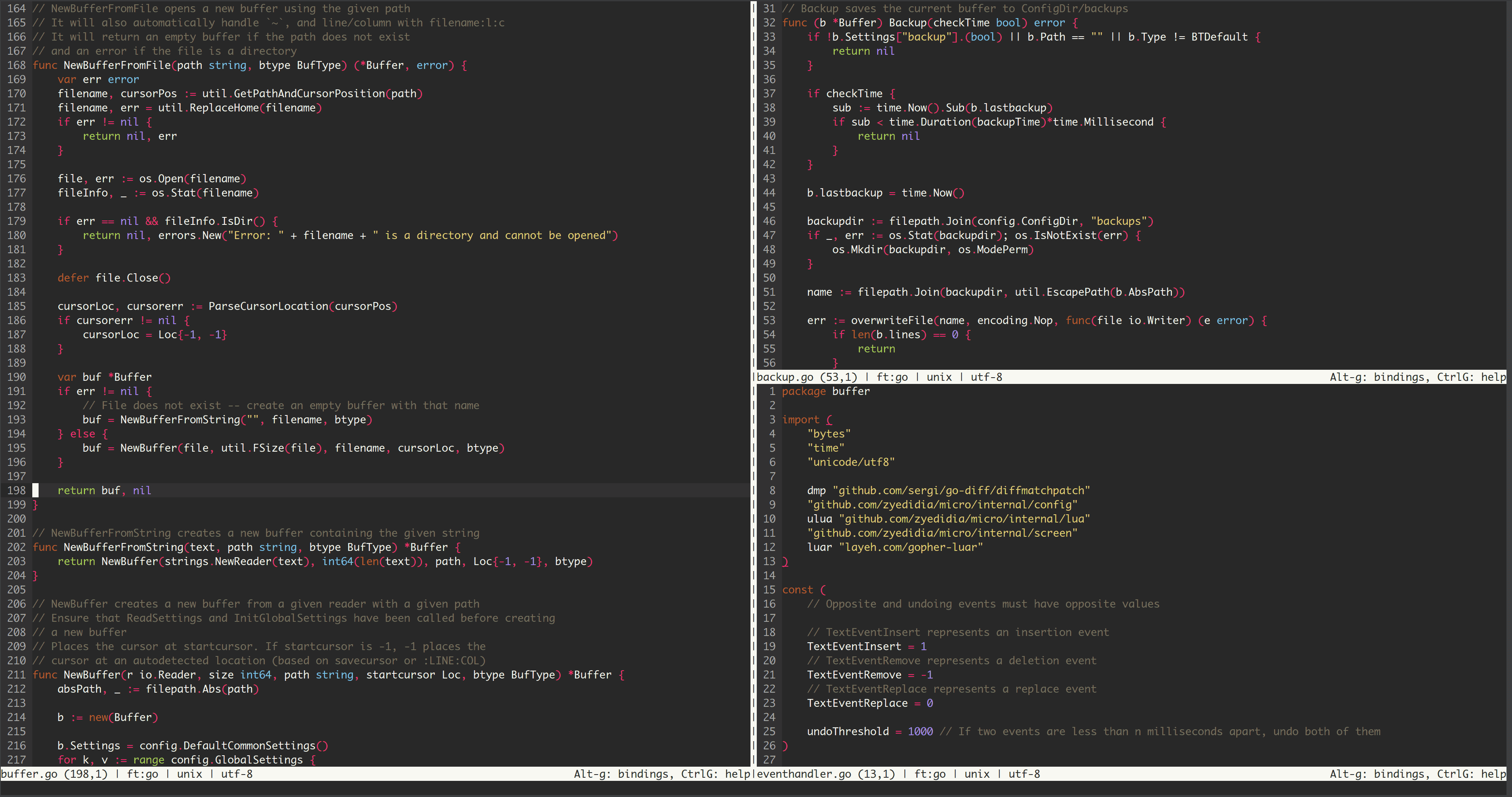micro: a modern and intuitive terminal-based text editor
5/26/2023, 7:32:09 AM

micro is a terminal-based text editor that aims to be easy to use and intuitive, while also taking advantage of the capabilities of modern terminals. It comes as a single, batteries-included, static binary with no dependencies; you can download and use it right now!
As its name indicates, micro aims to be somewhat of a successor to the nano editor by being easy to install and use. It strives to be enjoyable as a full-time editor for people who prefer to work in a terminal, or those who regularly edit files over SSH.
Features
- Simple and easy to use
- Plugin system
- Highly customizable
- Common keybindings (customizable)
- Colors and syntax highlighting
- Multiple themes
- Terminal emulator
- Multiple cursors
- Sane defaults.
- You shouldn't have to configure much out of the box (and it is extremely easy to configure).
- Splits and tabs.
- nano-like menu to help you remember the keybindings.
- Extremely good mouse support.
- This means mouse dragging to create a selection, double click to select by word, and triple click to select by line.
- Cross-platform (it should work on all the platforms Go runs on).
- Note that while Windows is supported Mingw/Cygwin is not (see below).
- Plugin system (plugins are written in Lua).
- micro has a built-in plugin manager to automatically install, remove, and update plugins.
- Built-in diff gutter.
- Simple autocompletion.
- Persistent undo.
- Automatic linting and error notifications.
- Syntax highlighting for over 130 languages.
- Color scheme support.
- By default, micro comes with 16, 256, and true color themes.
- True color support (set the MICRO_TRUECOLOR environment variable to 1 to enable it).
- Copy and paste with the system clipboard.
- Small and simple.
- Easily configurable.
- Macros.
- Common editor features such as undo/redo, line numbers, Unicode support, soft wrapping,
Install on macOS
You can get it on macOS using Homebrew
brew install microLicense
MIT and other license
Platforms
macOS
Other Supported Platforms
Windows and Linux